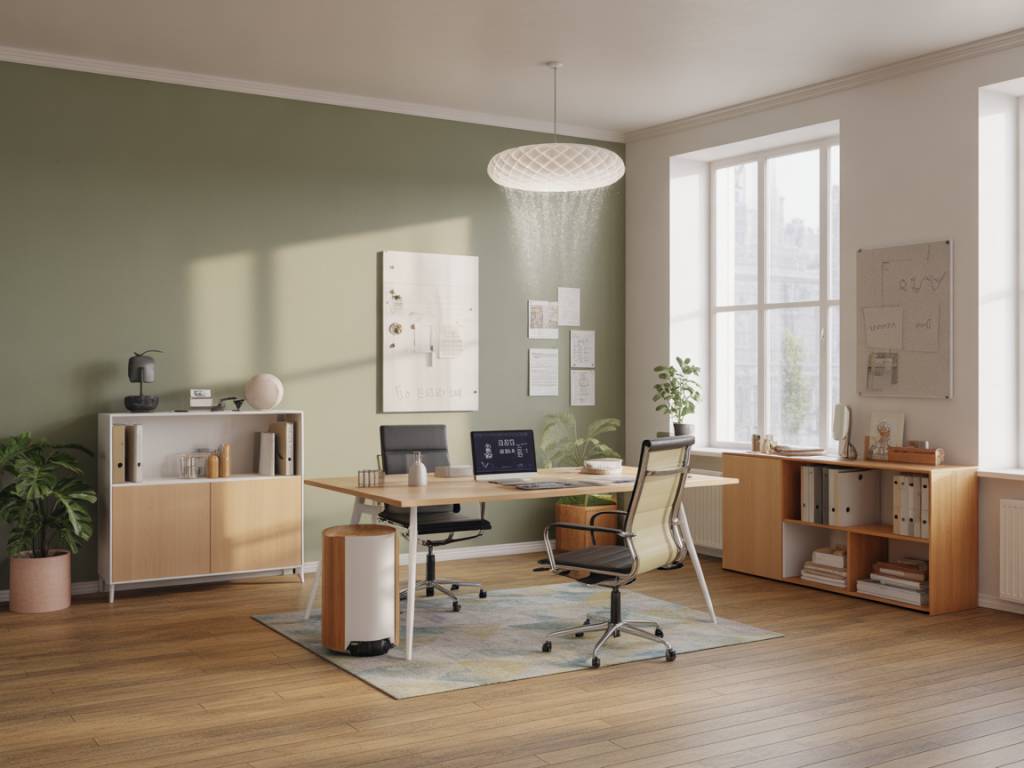Emerging Air Purification Trends for Office Environments in 2024
As companies continue to prioritize employee health and productivity, clean air in office environments has become more than just a perk — it’s now considered essential. Technological advances and evolving corporate expectations are driving a new generation of smart and sustainable air purification solutions. In 2024, the focus lies not only on air quality but also on energy efficiency, real-time monitoring, and the integration of air purification into overall building management systems.
Why Office Air Quality Matters
Indoor air quality (IAQ) in offices has a direct impact on employee well-being and efficiency. Prolonged exposure to volatile organic compounds (VOCs), fine dust particles (PM2.5), and biological contaminants such as mold spores can lead to fatigue, respiratory issues, and cognitive impairment.
According to the Environmental Protection Agency (EPA), indoor air can be up to five times more polluted than outdoor air. In an era heavily influenced by hybrid working models and health-conscious design, businesses are recognising the critical role clean air plays in employee retention, job satisfaction, and even reputational risk management.
Top Air Purification Technologies to Watch in 2024
Innovations in air purification are moving beyond traditional HEPA filtration. Here’s a look at the cutting-edge technologies gaining traction in office settings this year:
- Photocatalytic Oxidation (PCO): This technology uses UV light and a catalyst such as titanium dioxide to neutralize airborne pathogens and VOCs. It’s increasingly being used in HVAC-integrated solutions for large office buildings.
- Electrostatic Precipitation (ESP): Effective at capturing particulate matter without replacing traditional filters. Ideal for open-plan offices with high foot traffic.
- Activated Carbon Filtration: Especially useful in removing odours and gaseous pollutants, frequently used in offices in urban environments.
- Bipolar Ionization: Generates ions that attach to airborne particles, increasing their mass and making them easier to filter. It also deactivates bacteria and viruses, a key benefit in post-pandemic office hygiene management.
- UV-C Germicidal Irradiation: A proven method for breaking down microorganisms. In 2024, UV-C is more discreetly integrated into ducts and ceiling-mounted units to improve safety and efficiency.
Smart Air Purifiers and IoT Integration
The Internet of Things (IoT) has transformed how air purification systems operate within office ecosystems. In 2024, smart air purifiers equipped with Wi-Fi or Bluetooth connectivity allow for real-time data collection and remote management via mobile apps or facilities management dashboards.
Features such as air quality sensors, usage analytics, and AI-driven air quality forecasting help building managers optimise performance and reduce costs. These intelligent systems often interface seamlessly with HVAC and BMS (Building Management Systems), automating air quality adjustments based on occupancy or time of day.
Integration of digital twin technology also allows simulation-based optimisation of airflow, filter replacement timings, and energy use, elevating uptime and reducing maintenance costs.
Energy Efficiency and Sustainability
As regulatory pressure and ESG (Environmental, Social, and Governance) reporting increase, sustainability is a major factor in choosing air purification solutions. Energy-efficient purifiers that meet strict environmental standards like ENERGY STAR®, or those that use recyclable filters, are in demand.
Some air purification solutions launched in 2024 are designed with low-power modes, self-cleaning filters, and longer life cycles. In response to client demand, vacuum UV-based technologies and hybrid systems are also emerging, using less power while maintaining purification standards.
Designing Healthier Office Layouts
Interior designs are evolving to accommodate air quality improvements. Employers are embracing biophilic design, movable air purification pods, and indoor greenery to enhance IAQ naturally. Space planning now often includes strategically placed purifiers in shared spaces such as kitchens, meeting rooms, and breakout areas.
Centralised systems are being replaced or supplemented by localised purification units that enhance individual zones. This zonal purification aligns with flexible workspaces, offering employees reassurance when returning to the office.
Monitoring and Compliance Standards
Businesses are required to monitor IAQ closely and report metrics, especially in regions with stringent workplace health codes. Certifications like WELL Building Standard™, RESET Air, and LEED are increasingly influencing procurement decisions.
Advanced systems now feature real-time IAQ dashboards mounted in office lobbies or delivered via employee apps. These displays include metrics such as CO2 levels, PM2.5, temperature, and humidity. Transparency fosters confidence and promotes a culture of health and safety.
Air Purification Services for Businesses
Companies are turning to comprehensive air purification services rather than buying equipment outright. These service contracts usually include installation, regular maintenance, filter replacements, and performance analytics reporting.
Subscription-based models are particularly popular with SMEs, offering flexibility and peace of mind without the upfront capital investment. Providers now tailor solutions to specific industries — from law firms to creative studios — ensuring noise levels, aesthetics, and footprint match the client’s workspace ethos.
What to Consider When Choosing Office Air Purification in 2024
When selecting an air purification system for your workplace, several key factors should guide your decision:
- Type of pollutants: Understand whether the office suffers from dust, bacteria, VOCs, or a combination thereof.
- Room size and layout: Different units have different effective ranges. Open-plan offices may require coordinated zoning.
- Maintenance requirements: Check filter life, ease of cleaning, and whether the provider offers support services.
- Certifications and compliance: Choose systems with third-party validation or those in line with WELL and RESET standards.
- Noise level: Especially important in workspaces where concentration is key.
The Future of Air Purification in Office Spaces
Looking ahead, the nexus of technology, sustainability, and health will continue to redefine air purification strategies. AI-powered predictive maintenance, quiet nanotech filtration, and personalised air purification zones are just over the horizon.
Businesses that invest in these innovations not only stand to improve air quality but also demonstrate a commitment to employee welfare — a competitive advantage in a changing work landscape. As awareness grows and technology evolves, clean air in office environments will move from trend to standard, shaping the future of workplace well-being across industries.
